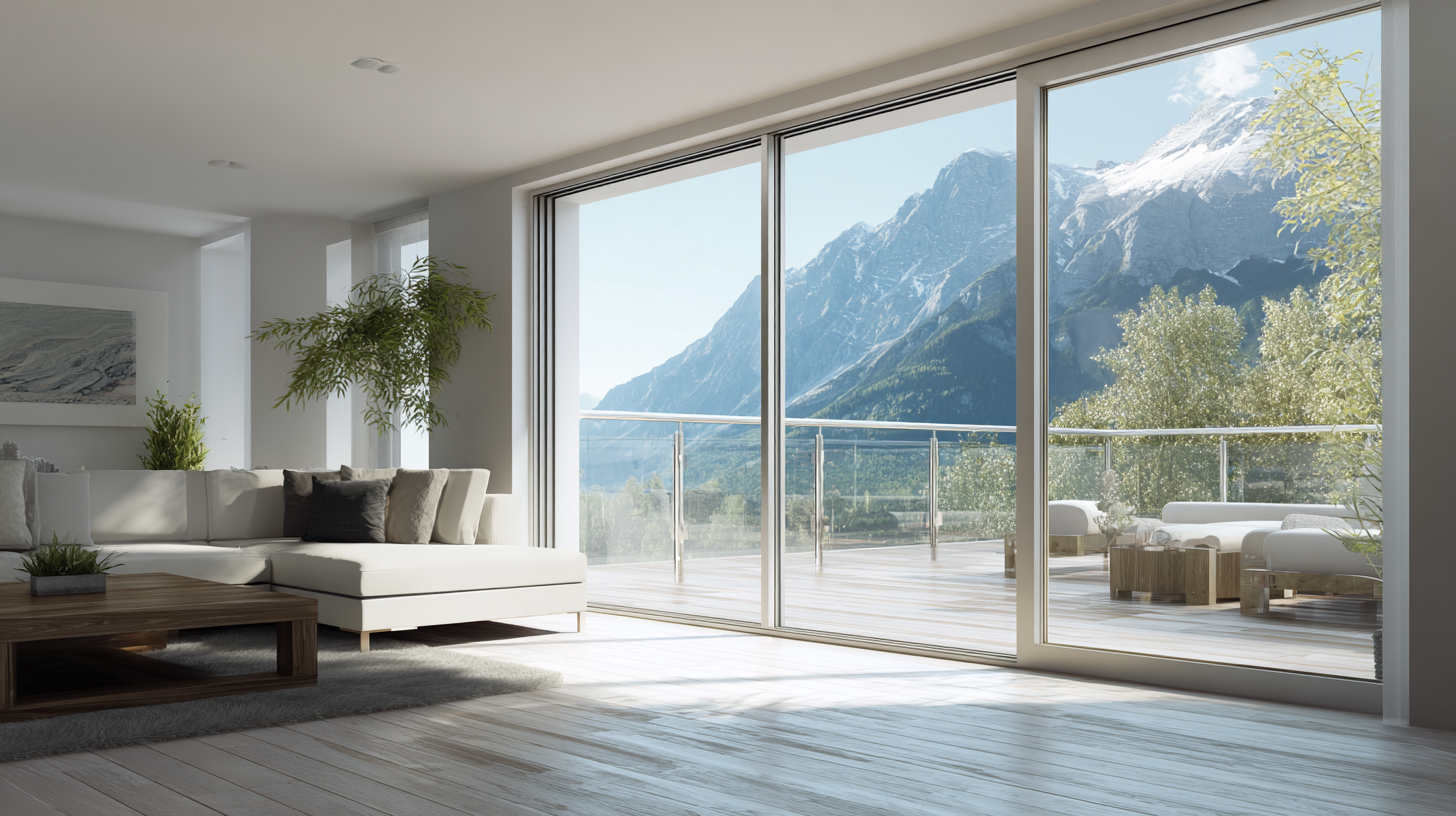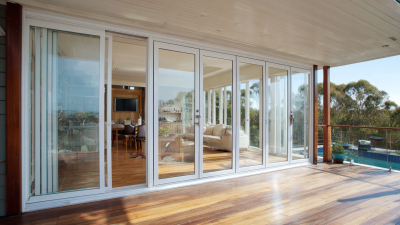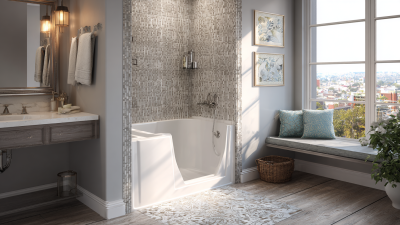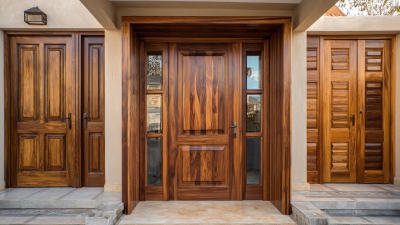Serving Minnesota & Iowa for over 25 years
Reviews
Ultimate Guide to Sliding Door Installation in 2025 Top Digital Trends
In the ever-evolving landscape of home design and renovation, the importance of effective sliding door installation in 2025 has become increasingly prominent. According to a recent report by the National Association of Home Builders, sliding doors are projected to account for over 30% of residential door installations this year, reflecting a growing preference for functionality and aesthetic appeal in modern homes. As homeowners prioritize seamless transitions between indoor and outdoor spaces, staying ahead of digital trends in sliding door technology and installation processes is essential.

Industry expert, Michael Thompson, a renowned specialist in architectural design, emphasizes the significance of this trend, stating, "Incorporating advanced sliding door systems not only enhances a home's visual appeal but also maximizes space efficiency and energy performance." With innovations such as smart glass and automated opening mechanisms gaining traction, it is crucial for contractors and DIY enthusiasts alike to be informed about the latest techniques and best practices in sliding door installation. This guide aims to equip you with the knowledge necessary to navigate the future of sliding door solutions, ensuring your installation projects meet both aesthetic and functional demands.
Emerging Digital Technologies Revolutionizing Sliding Door Installation in 2025
The world of sliding door installation is poised for transformation in 2025, driven by groundbreaking digital technologies that enhance efficiency and precision. One of the most notable trends is the integration of augmented reality (AR) in the design process. By using AR applications, homeowners can visualize how different sliding door styles and configurations will look in their spaces before making a purchase. This immersive experience enables customers to make informed decisions, while installers benefit from detailed digital measurements that streamline the installation process.
In addition to AR, the adoption of smart technology is revolutionizing the way sliding doors are manufactured and operated. Automated systems equipped with sensors and connectivity options allow for seamless integration with home automation networks. This not only improves the convenience of operating sliding doors but also enhances security features, providing homeowners with peace of mind. As digital technologies continue to evolve, the sliding door installation process will become more streamlined, providing greater customization options and ultimately transforming the user experience.
Emerging Digital Technologies Revolutionizing Sliding Door Installation in 2025
This chart illustrates the adoption rates of various emerging digital technologies influencing sliding door installation in 2025, highlighting AI, IoT, VR, and automation.
Key Data-Driven Insights on Consumer Preferences for Sliding Doors
 As the sliding door market evolves, understanding consumer preferences becomes crucial for manufacturers and retailers alike. Recent studies indicate that a significant percentage of homeowners prioritize aesthetics and functionality in their door selections. According to industry reports, 65% of consumers now prefer sliding doors that not only enhance natural light but also blend seamlessly with modern interior designs. This emphasis on style is coupled with a growing awareness of energy efficiency, as 40% of buyers now consider thermal insulation and eco-friendliness as essential features.
As the sliding door market evolves, understanding consumer preferences becomes crucial for manufacturers and retailers alike. Recent studies indicate that a significant percentage of homeowners prioritize aesthetics and functionality in their door selections. According to industry reports, 65% of consumers now prefer sliding doors that not only enhance natural light but also blend seamlessly with modern interior designs. This emphasis on style is coupled with a growing awareness of energy efficiency, as 40% of buyers now consider thermal insulation and eco-friendliness as essential features.
Tips: When promoting sliding doors, highlight versatile designs that can suit various home styles while also focusing on energy-efficient options. Emphasizing these attributes can attract a broader audience and meet the rising consumer demand for sustainability in home improvements.
Additionally, data from the Power Sliding Door System market indicates a shift towards electric propulsion methods, with a projected growth rate of 20%% over the next five years. This trend showcases consumer interest in innovative technologies that offer convenience and reliability. Featuring these advancements in marketing strategies can significantly increase brand appeal.
Tips: Leverage digital platforms to showcase interactive features and smart home integration of sliding doors. Use engaging content to educate potential buyers on the benefits of modern technologies in home installations.
Enhanced User Experience through Augmented Reality in Installation Processes
Augmented Reality (AR) is rapidly transforming the installation process of sliding doors, enhancing user experience by providing real-time, interactive guidance. In 2025, digital trends are focusing on immersive technologies that allow users to visualize how a sliding door will fit into their space before making a purchase. By leveraging AR applications, customers can seamlessly integrate 3D models of sliding doors into their environment, enabling them to assess dimensions, styles, and aesthetics directly from their devices. This immediate feedback helps in making informed decisions, reducing the likelihood of mismatched installations.
Furthermore, the adoption of mixed reality technologies not only streamlines the installation process but also elevates customer engagement. Users can interact with their chosen products in a virtual setting, experiencing features and functionalities firsthand. This immersion fosters a deeper understanding and connection to the product, leading to greater satisfaction. As digital innovations continue to evolve, the convergence of AR with other technologies signals a future where installation procedures for sliding doors become more intuitive, efficient, and customer-centric.
Sustainable Materials in Sliding Door Manufacturing: A 2025 Outlook
As we look towards 2025, the sliding door industry is increasingly focusing on sustainable materials in their manufacturing processes. The need for eco-friendly options is driven by consumer demand and regulatory pressures, urging manufacturers to innovate. Options such as recycled aluminum, reclaimed wood, and low-VOC (volatile organic compounds) finishes are becoming popular choices. These materials not only minimize environmental impact but also enhance the aesthetic appeal of homes.

Tips for Choosing Sustainable Sliding Doors:
- Research Material Sources: Look for manufacturers that prioritize sustainability in their supply chains. Materials like bamboo or reclaimed timber can significantly lower your carbon footprint.
- Consider Energy Efficiency: Opt for sliding doors that offer excellent insulation properties. Low-E glass and other energy-efficient features can help save on heating and cooling costs.
- Check for Certifications: Look for certifications such as FSC (Forest Stewardship Council) or ENERGY STAR, which indicate a commitment to environmental sustainability.
By integrating these sustainable materials and practices into sliding door installations, homeowners can make responsible choices that benefit both their living spaces and the planet. Keeping an eye on these trends will be essential for anyone looking to enhance their home in harmony with the environment.
Predictive Analytics in Installation Efficiency: Trends and Statistics
Predictive analytics is becoming increasingly vital in enhancing installation efficiency, particularly in sliding door installation as we approach 2025. With the emergence of advanced data analytics trends, businesses can harness real-time insights to streamline their processes. By employing predictive analytics, companies can foresee potential challenges during installation, enabling them to prepare and adapt accordingly. This approach not only improves the effectiveness of installation but also ensures cost-effectiveness and reduces overall project timelines.
Moreover, industries are gravitating towards AI-driven solutions that leverage data to enhance operational efficiency. The construction sector, for instance, is utilizing AI to optimize project management and reduce costs, demonstrating the practical applications of predictive analytics. As organizations increasingly tap into data-driven methodologies, we can anticipate a marked improvement in installation practices, driven by the insights gained from predictive analytics. This trend is reshaping the landscape of installation services, providing a glimpse into a more efficient future.
Related Posts
-

The Future of Sliding Door Installation at the 138th Canton Fair in China 2025
-

The Ultimate Guide to Choosing the Right Exterior Sliding Doors for Your Home
-

The Ultimate Guide to Choosing the Perfect Step In Bathtub for Your Home
-

The Ultimate Guide to Choosing the Perfect Entry Doors for Your Home Décor
-

Exploring the Benefits of Installing French Doors Exterior for Modern Homes
-

Transform Your Space: Innovative Bathroom Makeover Ideas for a Stunning Refresh